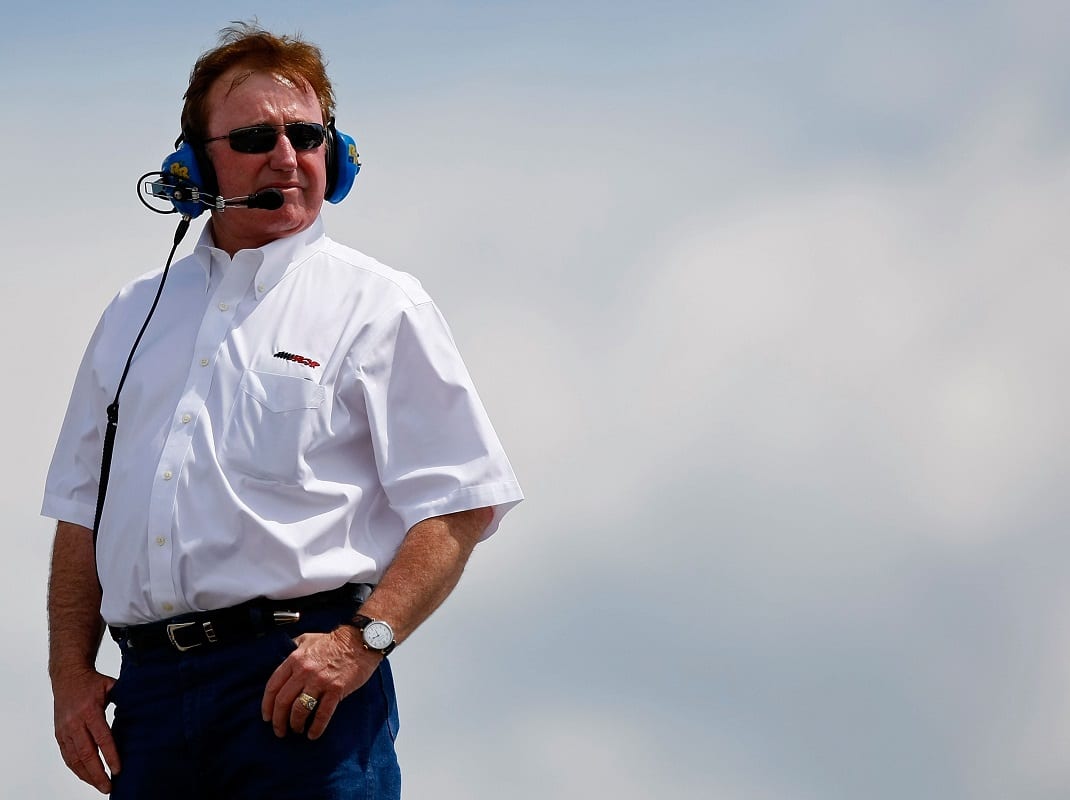One could say an oak tree planted in the early 1900s on Wayside Drive in Winston-Salem, N.C., served as the foundation of Richard Childress Racing.
It was where engines were pulled from car frames almost a decade before the powerhouse championship organization was officially formed in 1969.
Now in its 50th season, drivers, crew members and company personnel have contributed to 228 victories and 13 championships in the Monster Energy NASCAR Cup Series, NASCAR Xfinity Series, NASCAR Gander Outdoors Truck Series and ARCA Menards Series.
It all began with one particular 1947 Plymouth that Richard Childress raced at Winston-Salem’s Bowman Gray Stadium.
Childress worked at Adams Hosiery Mill where he met a co-worker who told him the car had once been a taxi cab. Childress paid $20 for the car, welded in rollbars, bought an airplane seat belt at the local Army-Navy store and raced it at the quarter-mile track.
He and friend Jerry Cooper borrowed money to buy an additional 1954 Plymouth to race at short tracks in North Carolina and Virginia. Cooper stepped away, but Childress continued with one goal in mind.
“Becoming a Cup Series driver in NASCAR was always my dream,” Childress said. “When I was working at Bowman Gray selling concessions, that was what I wanted to do. In 1969, when I ran a Grand American race and drove around the Talladega track, that’s when I was sure I wanted to become a full-time racer.”
The aforementioned Grand American event served as Childress’ big break. On Sept. 14, 1969, a boycott was staged by premier series drivers at Talladega (Ala.) Superspeedway. Childress was given a spot in the field with his Grand American car, a companion series to the Cup Series machines.
The $1,175 he earned for finishing 23rd paid for his first race shop, which was about the size of RCR’s present reception area.

Even though he didn’t win as a Cup Series driver, Childress recorded six top-five finishes and 76 top-10 results in 285 starts, with a fifth-place finish in the 1975 point standings.
“For the amount of funding we had when I was a driver, I think we did pretty well,” Childress said. “I would have maybe two or three paid crew members and I would pick up guys to help us in the pits. I’ve wondered sometimes how well we could have done had I really had the money to race with in those days.”
H.A. “Humpy” Wheeler, a former Firestone Tire Co. representative and longtime president of Charlotte Motor Speedway, respected Childress for his perseverance.
“There’s no question in my mind had he had some good equipment, he would have won some races,” Wheeler told SPEED SPORT in 2014. “That last $100,000 wasn’t there. He would always show up at the track with no money because he just didn’t have it, but he was a smart guy who managed the money he did have very well. I always thought he would make a great car owner.”
After starting 20 Cup Series races in 1981, Childress stepped away from the driver’s seat.
“In the late 1970s, I could see the future coming with (team owners) Warner Hodgdon, Rod Osterlund, M.C. Anderson and Harry Ranier putting a great deal of money into it. I was used to top-10 finishes, but all of the sudden I found myself running 12th or 15th and it just wasn’t fun for me anymore,” Childress explained. “I knew if I wanted to stay in the sport I had to find a driver to continue doing it. So I got out of the car and put (Dale) Earnhardt in it for 10 races.”
Childress knew he wasn’t completely ready to provide Earnhardt with the top-flight equipment needed to meet his potential.
“We weren’t ready to give Dale what he needed to win championships,” Childress said. “We sat in the parking lot of the old Sheraton hotel at Darlington and I said to him, ‘I don’t have what it takes to run a championship-caliber driver like you right now. Someday, I hope I will.’
“Ricky Rudd won two for us in 1983, so I knew then we were ready to give Dale what he needed (in 1984). When Dale was on the track, he was an intimidating driver,” Childress continued. “You may question the car, the tires or the engine but when it came to Dale Earnhardt, you never questioned the driver.”
